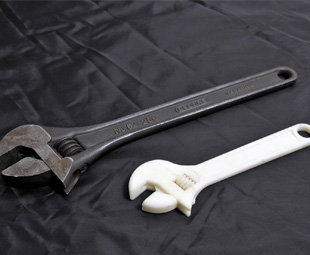Printing the path to progress

The commercial vehicle industry is no stranger to innovative technology as vehicles, generally, don some high-tech equipment … The techno tools aren’t, however, only present in these units; they’re used to develop them as well.
At General Motors South Africa (GMSA), engineers have been working with Rapid Prototyping (better known as 3D printing) since 2007 – when the company acquired a 3D printing machine – to develop new prototype parts; saving time and cutting development costs.
Since then, the machine has played a key role in the localisation and validation process during the development of the sixth-generation Isuzu KB, which was launched in South Africa last year.
Dave Doubell, validation engineer at GMSA, explains: “We have used this technology to grow prototype parts of a range of components. These include plastic clips, mud guards, support brackets, air cleaner and air-conditioner components, radiator shrouds, rear step components, electronic module housings, as well as the utility box for the extended cab variant.
“In addition, we often use the machine to make our own ‘special tools’ and functional components to support our testing equipment, which we use on a daily basis in the engineering workshop,” says Doubell.
Jessel Vencencie, vehicle engineer manager, adds: “Through this technology we are able to make functioning prototype parts, which are then used to give us an early indication of how the actual part will function when fitted to a vehicle. So 3D printing allows flexibility by speeding up the development process of parts while we fine tune the design of a component for better form, fit and functionality.”
Wendle Roberts, vice president of engineering for GM Africa, says that development of the sixth-generation KB didn’t stop when the organisation launched the vehicle. “We are constantly studying customer needs, feedback and warranty data to continuously develop and improve the capabilities of the KB.”
He concludes: “The beauty of rapid prototyping is that you can test components by installing three or four samples quickly without much cost. This allows us to try more options as we work to enhance the product.”
Published by
Focus on Transport
focusmagsa




